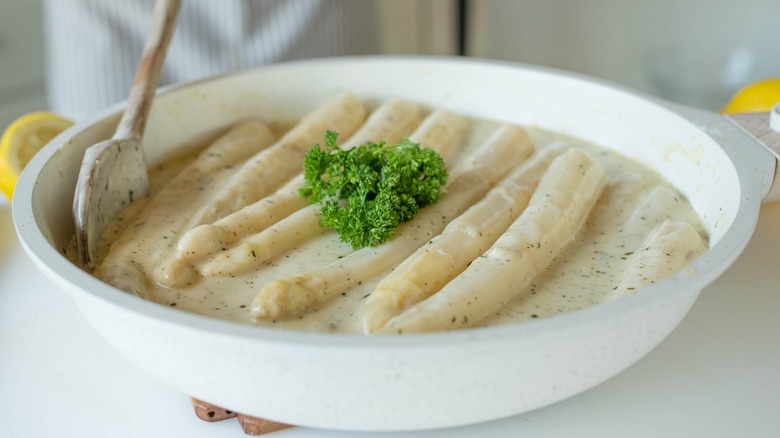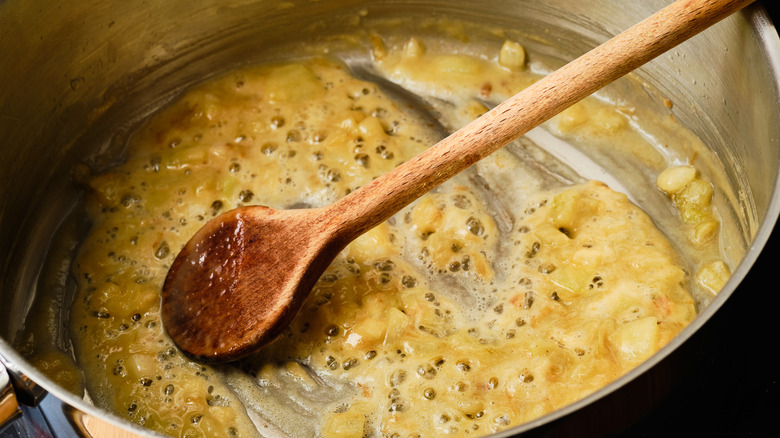The Origins Of Bechamel And How It Became One Of The World's Most Beloved Sauces
Bechamel is one of the five "mother" sauces in French cuisine, but it may have originated in Italy. The first mention of a bechamel-like sauce is attributed to Catherine de Medici. Known for her sumptuous dining, Catherine introduced an Italian sauce, called "salsa colla" to the French court when she married Henry II in 1533. This thick white sauce was used by Catherine's chefs to bind ingredients together like glue, but it's unknown whether the recipe was the same as present-day bechamel.
Another theory is that Duke Philippe de Mornay created bechamel sometime in the 1600s. There's little proof to back this up, but the story lingers possibly because a bechamel-based cheese sauce, Mornay sauce, is purportedly named for him. Also in the 1600s, the first written recipe for bechamel appeared in Francois Pierre de la Varenne's influential cookbook, "Le cuisinier françois." La Varenne is credited for documenting the instructions for making bechamel, but it's unclear if he created it or simply improved a pre-existing recipe.
Decades later, in 1733, "The Modern Cook" by Vincent La Chapelle featured a recipe for "Turbots (a la Bechameille)." La Chapelle's bechamel is a well-seasoned white sauce for enrobing turbots or other fish, and the recipe is recognizable as something a 21st-century cook might serve. In the end, we may never know for sure the true origins of bechamel. But what's undeniable is that it's a foundational sauce in many world cuisines.
Bechamel is incredibly versatile
With a tip of the hat to Catherine de Medici's chefs, bechamel — or besciamella – is an essential "glue" ingredient when making classic lasagna bolognese. Bechamel, instead of ricotta, is spread between the pasta and meat layers and helps retain the lasagna's shape while adding a mellow counterbalance to the acidic tomato sauce. Perhaps, one of the most iconic uses of bechamel is in a cheese souffle. All savory souffles begin with a basic bechamel into which egg yolks are gradually beaten. This egg-enriched bechamel gives form and substance to the whipped egg whites and prevents the souffle from collapsing.
In Greek cuisine, you'll find bechamel (besamel) used for moussaka casserole. A beaten egg again puffs up the bechamel, and when baked, the meat-heavy casserole finishes with a fluffy, golden-brown topping. Pastitsio is Greece's version of lasagna, and bechamel replaces mozzarella with an indulgent and creamy top layer. Crossing into Spain, a favorite snack at most tapas bars is the ham croqueta, a deep-fried crunchy ball that decadently oozes bechamel speckled with Serrano ham.
Bechamel is also the base for other sauces, like Nantua sauce, a luscious blend of cream, butter, and pureed crayfish, or cheddar cheese sauce that no self-respecting macaroni and cheese recipe should be without. Bechamel is so versatile that it can be adapted for a wide array of recipes from gratins to pot pies, which is why it is a beloved sauce worldwide.

